Summer cooling small tricks: urine on your feet
Author:Species calendar Time:2022.07.13
"Hot! Hot!" As everyone entered the oven or steamer mode, everyone became sweaty. At 35 ° C water, vaporization can take away 2426 burnt heat, so using sweat to evaporate heat dissipation is a very effective means.
It seems that sweating in our opinion is that in fact, in nature, animal heat dissipation methods are strange, such as spitting saliva, peeing on your feet ... and even insects that have a long relationship with us. Essence
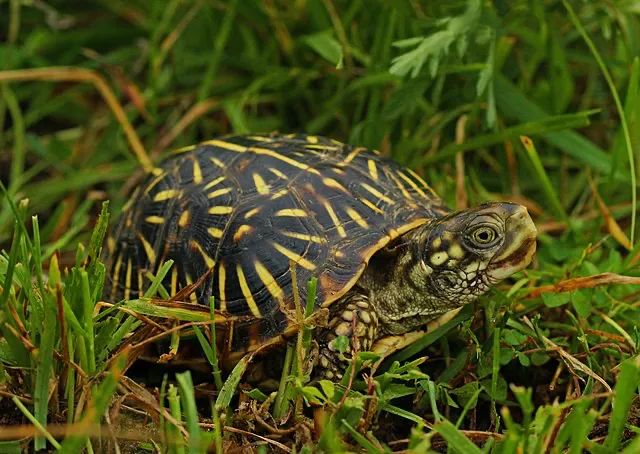
Broccoli turtle to heat dissipation by spitting saliva | Peter Paplanus/ Wikimedia Commosn

Khan, panting and saliva
Among animals, human sweats are unique. Monkey is only 80 or 90 grams of sweat every hour per hour, and human beings can exceed 800 grams! Therefore, the endurance of humans in high temperature environments is also unique in breastfeeding.
There are two types of sweat glands -Apocrine Gland and Eccrine Gland. Big sweat glands are usually scattered in places with hair all over the body, secreting sticky mixed liquids, containing fat, protein, etc.; Little sweat glands, concentrated in four -foot palm, and more than 99%of the secretions are water. Some animals such as horses, using sweat glands to sweat and heat dissipation. Humans use the sweat glands to sweat. Almost all the sweat glands of the body surface are small sweat glands. The sweat glands concentrate in the armpit, areola and privacy.
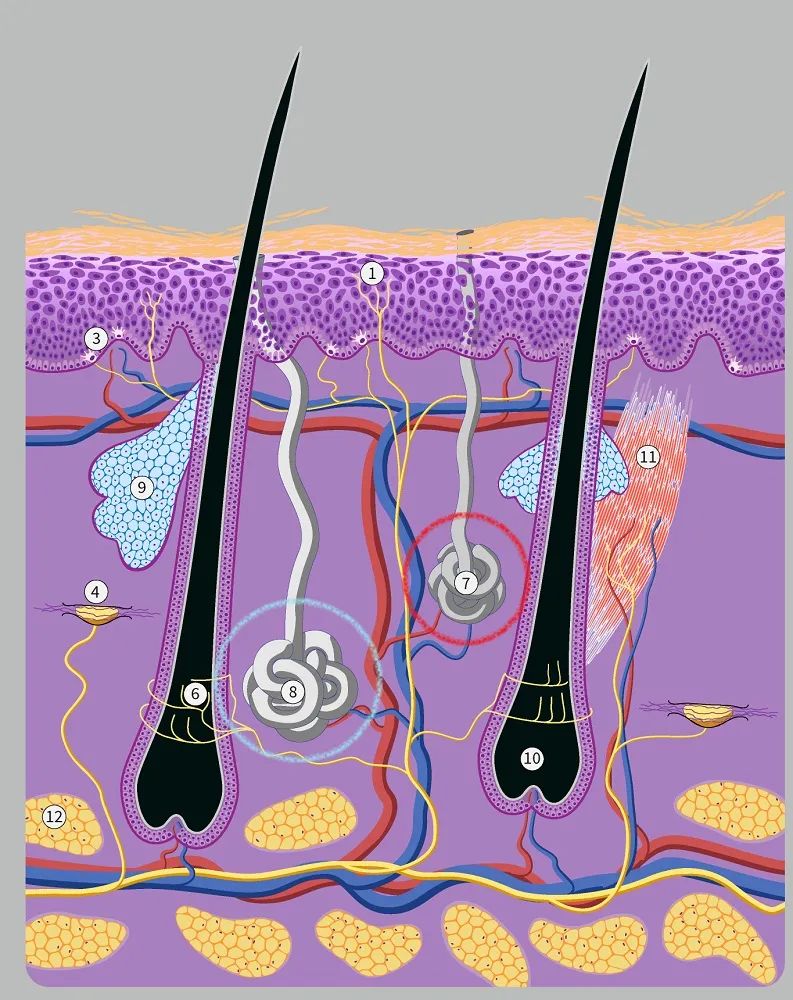
The anatomy of the skin gland, the number 7 (red circle) is a small sweat glands, the number 8 (blue circle) is the sweat glands | www.hegasy.de
The amount of sweats of other animals is not as good as humans, but they will heat dissipation in other ways, such as panting. Pastening is the most common method of heat dissipation of warm blood animals. The most common thing is that dogs look like "snoring" in the summer. Pastening makes the upper respiratory water evaporate, the surface of the respiratory tract is rich in blood vessels, the heat taken away by evaporation allows the blood to cool down, and the blood circulation further cools throughout the body.
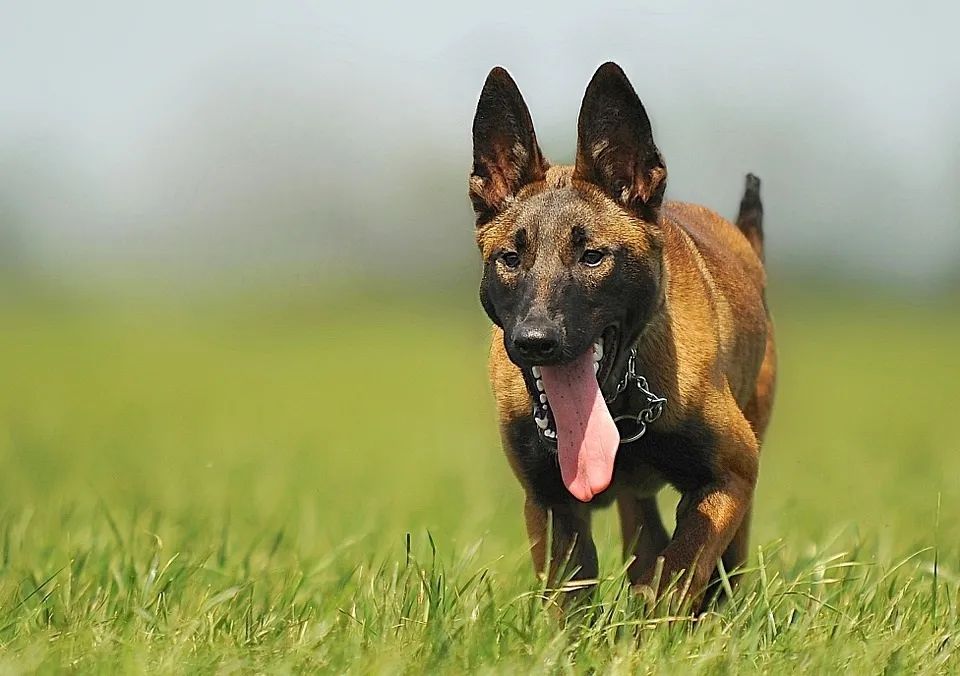
The dog's tongue does not sweat with the tongue, but to increase the contact area of the surface and air of the tongue | Pixabay
But panting also has its limitations. The surface area of the respiratory tract is limited (the dog can rigid the tongue to increase the surface area), and the efficiency of heat loss is also limited. The gas exchange of asthma occurs only in the upper respiratory tract. For a long time, the carbon dioxide of the lungs cannot come out, which will accumulate alkaline poisoning. And when the four -foot animal runs, the torso will flex and stretch back and forth, hindering the contraction of the diaphragm. So they couldn't hold their breath like a wind piano.
Another way is to use other water as a sweat supplement. Macropus Rufus has sweat glands but is not developed. It only sweats during exercise. When it is hot, it will lick the arms and let saliva replace sweat away from calories. Kangaroo's front leg hair is sparse, moisture is easy to evaporate, and the surface has developed blood vessels that can complete the task of heat exchange.

Kangaroo is dissipated by licking the arm | pixabay
Interestingly, the Terrapene Ornata will also "spit foam" when it is hot, spit out a lot of saliva, and use the water evaporation of the oral and respiratory tract to take away the calories.

Chan who can sweat
The Diceroprocta Apache in the Arizona desert in the United States specializes in the hottest summer period of the hottest summer, and it is also on the hottest noon to hang it on the fire of fire. The temperature in the desert is up to 48 ° C, and the cicada body temperature reaches 45.6 ° C. It will lose muscle control and fall into the hot sand alive.
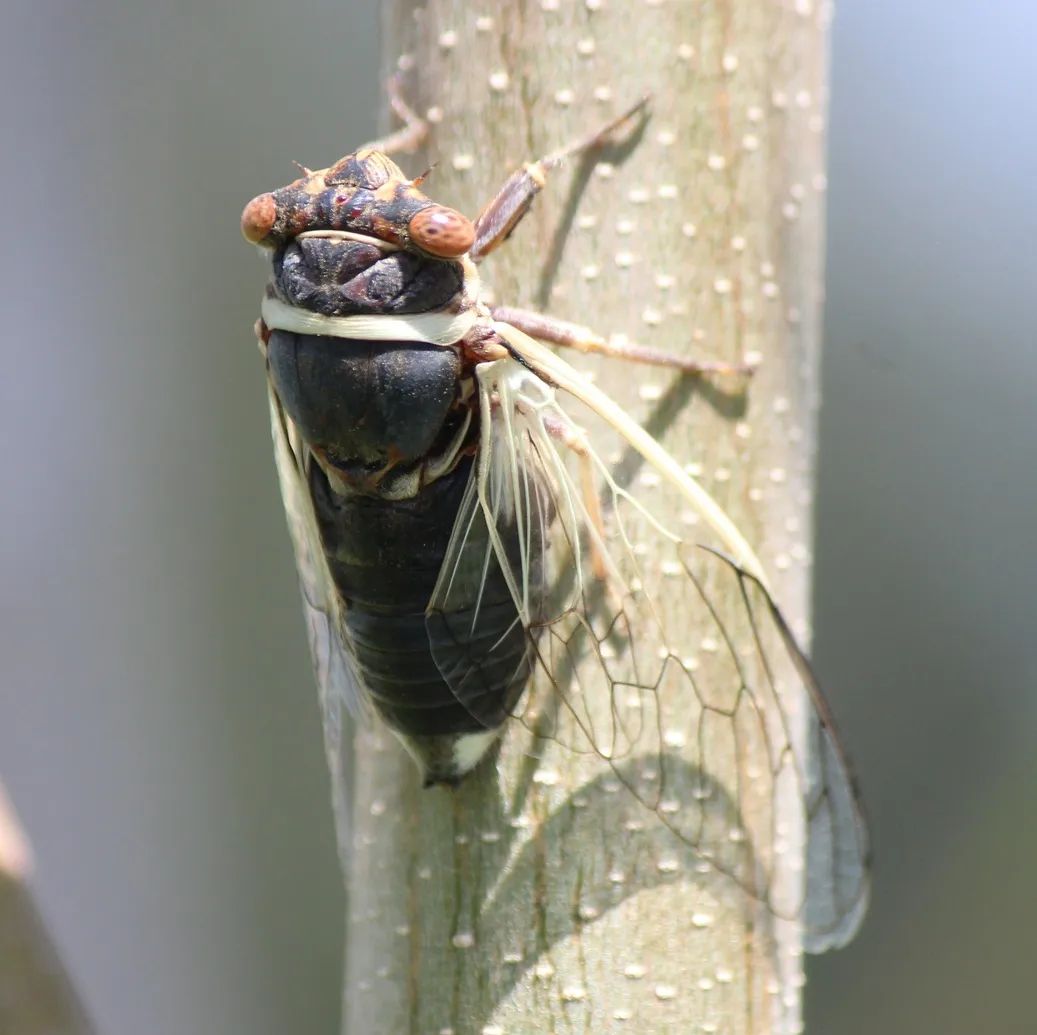
Apache Cicada | Steven Kurniawidjaja / Inaturalist
The benefit of embracing the heat is to avoid predators. Spring is cooler, but at this time, the birds are breeding, and the demand for food is large. At noon in summer, the birds and bees who prey for cicada are not dared to come out. The Apaci cicada stops activities when it is extremely hot, hiding under the shadow of the leaves. However, it is the ability to "sweat" in insects. There are many small holes on the chest and abdomen surface of Apache cicada, which can evaporate and cool down. Within an hour, it can discharge 1/3 of the water in the body.

Apache cicada body surface | neil F. Hadley et al. / J. Exp. Biol. (1989)
Water in the desert is undoubtedly precious. However, Apaci cicada has the inexhaustible water source: the juice of the plant wood, almost all the ingredients are water. Because the nutritional density of the tree juice is too low, the cicada will constantly excrete the water (under the tree in the summer, it may be urinated by cicada). The Apaci cicada is used to cool himself, which can also be regarded as waste.

Bird: Long Water Stream
The birds did not sweat, so some birds such as 鹳 and America have embarked on another path in evaporation and cooling. Expecifies on the legs and feet without blood vessels and no hair, allowing water to evaporate and take away heat.
Cathartes Aura is usually sprayed backwards. In the hot environment, red -headed America will be changed to drop and sprinkle the excrement on the feet. This excreta water content reaches 95%, and only a small amount (5 ml) at a time.
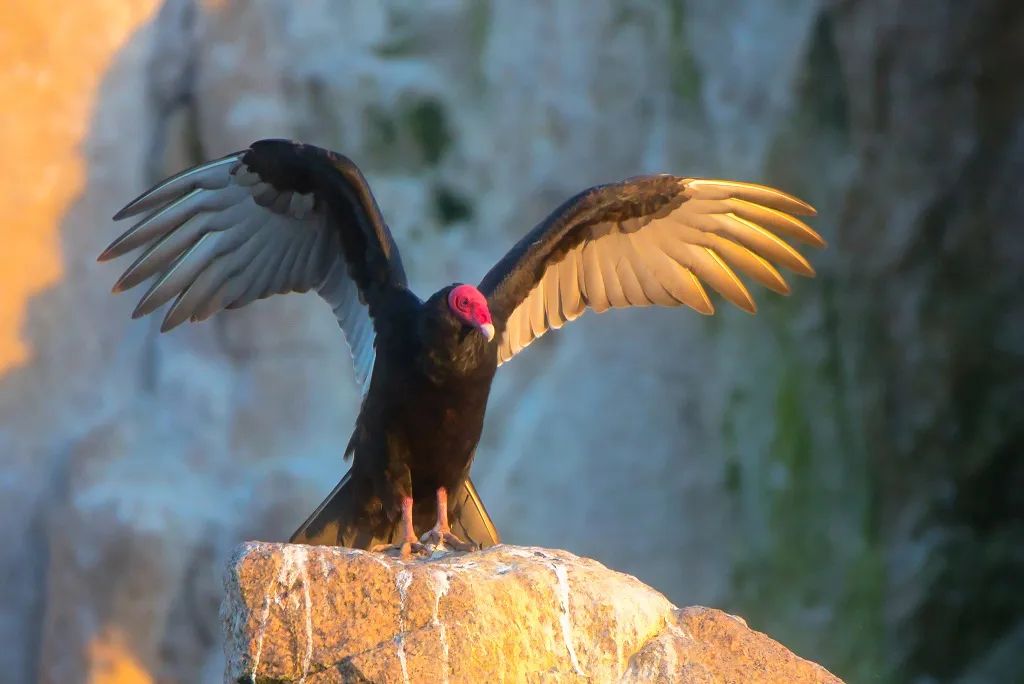
Cool bald boss | juan Rodolfo Lillo Lobos / J. Exp. Biol. (1989) Although the legs and feet of the Americas are not large, there are not many water sprinkled on it, but this "radiator" is very efficient. Experiments show that the legs of red -headed America are exposed to the normal temperature environment, sprinkled with 2.5 ml of water, and then used the fan to blow up the evaporation. Even if the rest of its body is locked in a high -temperature box of 50 ° C, it can maintain stability of body temperature and stability. Essence
In this regard, there is also an advantage in the Americas: Bird is a model of water saving. Bird's nitrogen metabolic products are non -toxic uric acid, while mammals are toxic urea. The latter needs a lot of water to dilute the discharge (urine), and the bird does not need it. Red -headed America can not drink water for more than a year, and only get water from the meat. Because it is good at saving water, when it is necessary to excrete heat, even if there is no water, it has water saved. In order to dissipate heat, red -headed America can excrete 40 times in 4 hours, which can be described as "long water".
Bird's water -saving talent also helps them adapt to desert life | Andy Reago Chrissy McClarren / Wikimedia
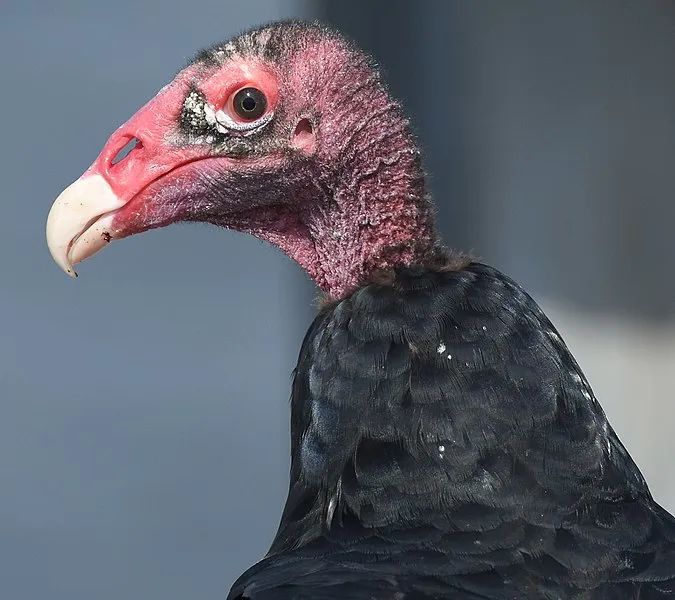
In addition to the excretion of red -headed America, it can also heat dissipate through panting and extended bare neck. It is widely distributed and is naturally inseparable from heat resistance. You may feel that sweating affects the image. In fact, you should be fortunate that we have not embarked on the path of birds.
references
[1] Hatch, Daniel E. "Energy Conserving and Heat Dissipating Mechanisms of the Turkey Vulture." The Auk (1970): 111-124.
[2] Lieberman, Danieie E. "Human Locomotion and Heat Loss: An Evolutionary Perspective." Comprehensive Physiology 5.1 (2011): 99-117.
[3] Needham, A. D., T. J. Dawson, and J. R. S. Hales. "Forelimb blood flow and saliva spreading in the thermoregulation of the red kangaroo, Megaleia rufa." Comparative Biochemistry and Physiology Part A: Physiology 49.3 (1974): 555-565.
[4] Heinrich, Bern. The Hoted Insects: Strategies and Mechanisms of thermoregulation. Springer Science Business Media, 2013.
Author: Little Hug Bear
Edit: Pee Pee Shrimp
- END -
"Can the big live people still be gone?" The police chased the scene, the police turned through the entire garbage factory!

In the garbage factory, the dust is full of dust and the machine roar.A fugitive p...
Guo Henli emphasized: accelerate construction and construction and step -up facilities to accelerate the transformation of the style to allow the development of regional integration to benefit the people at an early date

When Guo Heli investigated the construction of Linxia City Huancheng North Road pr...